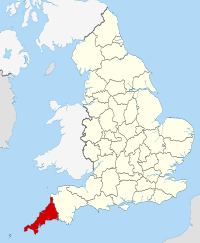Text and Illustrations from The Saint Andrew Daily Missal,
unless otherwise stated.
The Feast of All Saints.
Feast Day 1 November.
Double of The First-Class
with an Octave.
White Vestments.
The Church Triumphant.
The Church Militant.
The Church Suffering.
Illustration taken from UNA VOCE OF ORANGE COUNTY
who reproduce Text and Illustrations from Saint Andrew's Daily Missal, 1952 Edition,
with the kind permission of SAINT BONAVENTURE PUBLICATIONS
Artist: René de Cramer.
“Copyright Brunelmar/Ghent/Belgium”.
Used with Permission.
All Saints Day.
Featuring "Your Heart",
by Chris Tomlin.
Available on YouTube at
All Saints Day.
Featuring "Lifesong", by Casting Crowns.
Available on YouTube at
"Te Deum",
by Domenico Scarlatti,
for The Feast of All Saints.
Available on YouTube at
"Gaudeámus omnes in Dómino . . ."
("Let us all rejoice in The Lord . . .")
(Introit for The Feast of All Saints).
Available on YouTube at
The temple of Agrippa was dedicated, under Augustus, to all the pagan gods, hence its name of "Pantheon". Under Emperor Phocas, between 607 A.D. and 610 A.D., Pope Boniface IV Translated hither numerous remains of Martyrs taken from The Catacombs.
On 13 May 610 A.D., he Dedicated this new Christian Basilica to Saint Mary and The Martyrs. The Feast of this Dedication later took a more Universal character, and the temple was Consecrated to Saint Mary And All The Saints.
English: Saint Mary And All The Saints (The Pantheon (27 B.C.) - Piazza della Rotonda, Rome.
Français: Le Panthéon (27 av. J.C.) - Piazza della Rototonda (Rome).
Deutsch: Das Pantheon (27 v.Chr.) - Piazza della Rototonda (Rom).
Español: El Panteón (27 aC.) - Piazza della Rototonda (Roma).
Italiano: Il Pantheon (27 aC.) - Piazza della Rototonda (Roma).
Photo: 3 October 2011.
Source: Own work.
Author: Jean-Pol GRANDMONT.
(Wikimedia Commons)
English: The Interior of Saint Mary And All The Saints, Rome.
Русский: Внутреннее убранство Пантеона.
Photo: 22 May 2011.
Source: Own work.
Author: Владимир Шеляпин.
(Wikimedia Commons)
As there was already a Feast in Commemoration of All The Saints, Celebrated at first on various dates in various Churches, then fixed by Pope Gregory IV in 835 A.D., on 1 November, Pope Gregory VII transferred to this date the Anniversary of The Dedication of the Pantheon as a Church. The Feast of All Saints, therefore, recalls The Triumph of Christ over the false pagan deities. In this Church is held The Station on The Friday in The Octave of Easter.
As The Saints, Commemorated during the first three Centuries of The Church were Martyrs, and the Pantheon was at first Dedicated by The Church to them, The Mass of All Saints is made up of extracts from The Liturgy of Martyrs. The Introit is that of The Mass of Saint Agatha, used later for other Feasts; the Gospel, Offertory and Communion are taken from The Common of Martyrs.
The Church gives us on this day a wonderful vision of Heaven, showing us, with Saint John, the twelve thousand signed (twelve is considered a perfect number) of each tribe of Israel, and a great multitude, which no-one can count, of every nation and tribe, of every people and tongue, standing before the Throne and before The Lamb, clothed in White Robes and with Palms in their hands (Epistle).
Christ and Our Lady; The Blessed Battalions distributed in Nine Choirs; The Apostles and Prophets; The Martyrs, crimsoned in their blood; The Confessors, adorned in White Garments; and the chaste Choir of Virgins, form, as The Hymn of Vespers sings, The Majestic Court.
It is composed of all those, who, here below, were detached from Worldly riches, Gentle, Suffering, Just, Merciful, Pure, Peaceful, and Persecuted for The Name of Jesus. "Rejoice," The Master had foretold them, "for a great reward is prepared for you in Heaven" (Gospel, Communion).
Among those millions of The Just, who were faithful Disciples of Jesus, on Earth, are several of our own family, relations, friends, members of our Parochial Family, now enjoying the fruit of their Piety, adoring The Lord, King of Kings, and Crown of All Saints (Invitatory at Matins) and obtaining for us the wished-for abundance of His mercies (Collect).
Every Parish Priest Celebrates Mass for the people of his Parish.
Mass: Gaudeámus omnes in Dómino.
Creed. Is said.
All Saints Day.
Featuring "Your Heart",
by Chris Tomlin.
Available on YouTube at















































